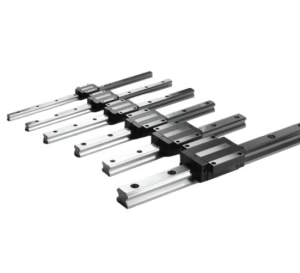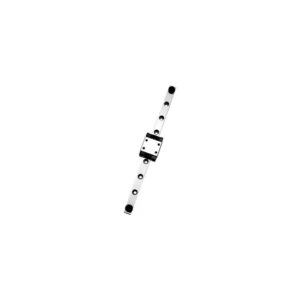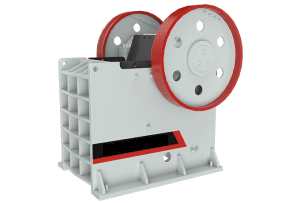Introduction
In the world of engineering and automation, precision and stability form the backbone of every successful operation. Whether you are working with CNC machines, industrial robots, or medical imaging devices, the demand for smooth and accurate motion never fades. Enter the Hiwin linear rail — a game-changer that has redefined linear motion systems.
These rails are not just mechanical components; they are the unsung heroes that ensure a robotic arm hits the exact coordinates or a milling machine cuts flawlessly every time. By combining cutting-edge design with durable materials, Hiwin rails deliver performance that stands the test of time.
This guide explores everything about Hiwin linear rails — their history, working mechanism, applications, advantages, and maintenance — so you can understand why they are the preferred choice in industries worldwide.
Hiwin Linear Rail
A Hiwin linear rail is a precision guideway system designed to enable smooth linear motion. Instead of relying on sliding friction like traditional bushings, it uses rolling elements such as balls or rollers inside a recirculating block. This design reduces friction dramatically, ensuring smoother travel and higher efficiency.
Hiwin rails are widely known for:
High rigidity that supports heavy loads.
Smooth linear motion with minimal resistance.
Accurate positioning, even under high stress.
Long service life, thanks to hardened steel and advanced coatings.
Because of these qualities, industries ranging from aerospace to electronics manufacturing consider Hiwin rails indispensable.
History of Hiwin Corporation
Hiwin Corporation, headquartered in Taiwan, was founded in 1989. The company quickly established itself as a global leader in motion control and system technology. With a vision centered on innovation and quality, Hiwin developed products that could rival and often outperform established Japanese and European competitors.
Some milestones worth noting:
1992: Launch of first generation linear guideways.
2005: Expansion into CNC and robotic components.
2010 onwards: Recognition as one of the world’s top motion control solution providers.
Today, Hiwin exports to more than 60 countries, serving industries such as semiconductor manufacturing, medical equipment, and industrial automation. Their reputation for producing high-quality linear rails at competitive prices has earned them a loyal customer base.
Types of Hiwin Linear Rail
Hiwin offers multiple series of linear rails to suit diverse applications:
HG Series: Designed for heavy loads and high rigidity.
EG Series: Compact and lightweight, ideal for limited-space environments.
QH Series: Features low noise and smoother motion due to optimized ball circulation.
MG Series: Miniature rails perfect for electronics, 3D printers, and medical devices.
Each series is tailored to specific industries. For example, HG rails dominate CNC machining centers, while MG rails are widely used in robotics and lab equipment.
Core Components of Hiwin Linear Rail
A Hiwin rail system typically consists of:
Rail: A hardened and ground steel base with precision grooves.
Block (Carriage): The sliding unit that contains recirculating steel balls.
Rolling elements: Steel balls that reduce friction and provide smooth motion.
Seals: Dust-proof ends that prevent contamination.
Lubrication system: Ensures longevity and reduces wear.
Each component plays a critical role. For instance, the seals protect against dust ingress, which otherwise could lead to premature failure.
Key Features of Hiwin Linear Rail
What sets Hiwin rails apart are their innovative features:
High load-bearing capacity: Capable of handling both radial and axial forces.
Interchangeable blocks and rails: Allowing flexibility and easy replacement.
Low friction design: Ensuring smoother, energy-efficient movement.
Corrosion-resistant coatings: Extending service life even in harsh environments.
Quiet operation: Reduced vibration and noise, especially in QH and EG series.
These features make Hiwin linear rails a preferred choice for applications where precision and durability are non-negotiable.
How Hiwin Linear Rail Works
The working principle of Hiwin rails lies in rolling contact. Unlike sliding systems where surfaces drag against each other, Hiwin rails use recirculating ball bearings inside the block. These balls roll along the grooves of the rail, continuously circulating in a loop.
This design provides:
Reduced friction — leading to energy savings.
Improved accuracy — motion remains consistent and repeatable.
Minimal wear and tear — extending lifespan compared to bushings.
In essence, Hiwin rails transform motion systems by replacing sliding resistance with rolling efficiency.
Advantages of Hiwin Linear Rail
Using Hiwin linear rails offers a wide range of benefits:
Precision – Achieves micrometer-level accuracy.
Durability – Withstands years of heavy use.
Load capacity – Handles multi-directional forces.
Versatility – Suitable for CNC, robotics, and medical devices.
Cost-effectiveness – Competitive pricing compared to Japanese brands.
For engineers and manufacturers, these advantages translate into reliable production and reduced downtime.
Applications of Hiwin Linear Rail
Hiwin rails find applications across industries:
CNC Machines – For smooth cutting, milling, and engraving.
Robotics – Enabling precise positioning in automation.
Medical Devices – Ensuring accurate movement in imaging and surgery.
3D Printing – Supporting fast, precise layering.
Semiconductor Manufacturing – Delivering clean, precise operations.
Each application highlights the adaptability and reliability of Hiwin’s products.
Hiwin Linear Rail in CNC Machines
CNC (Computer Numerical Control) machines depend heavily on linear rails for accuracy. Without them, milling or cutting paths would lack stability, resulting in poor-quality finishes. Hiwin rails provide the rigidity and precision needed for:
Milling machines
Lathes
Plasma cutters
Engraving machines
By reducing vibration and ensuring precise tool paths, Hiwin rails boost efficiency while maintaining high-quality results.
Hiwin Linear Rail in Robotics
Robotics demands repeatable accuracy, especially in assembly lines or medical robots. Hiwin rails provide:
Smooth guidance for robotic arms.
High stiffness for payload handling.
Low friction for energy-efficient movement.
In factories, Hiwin rails enable robots to assemble electronics with micron-level accuracy. In healthcare, robotic-assisted surgery benefits from the same precision.
Hiwin Linear Rail in Medical Equipment
In the medical field, precision is a matter of life and death. Hiwin rails are found in:
MRI machines
Surgical robots
Patient beds
Imaging devices
They ensure quiet, smooth, and accurate movements, which are critical in sensitive medical environments.
Installation of Hiwin Linear Rail
Proper installation is key to achieving the best performance. Steps include:
Preparing the mounting surface – Must be clean, flat, and stable.
Aligning the rail – Precision alignment ensures smooth travel.
Securing with bolts – Tightening evenly to avoid misalignment.
Installing the block – Carefully sliding blocks onto rails.
Lubrication – Applying grease or oil before operation.
Incorrect installation can lead to noise, uneven wear, or premature failure.
Lubrication and Maintenance
Hiwin recommends regular lubrication using grease or oil depending on application. Proper maintenance ensures:
Extended lifespan
Smooth motion
Reduced wear and tear
Typical intervals:
Light-duty use: Every 6 months
Heavy-duty use: Every 1–3 months
Avoid over-lubricating, as excess grease can attract dust.
Common Issues and Troubleshooting
Some common problems include:
Noise during motion → Caused by misalignment or lack of lubrication.
Uneven wear → Due to contamination or improper preload.
Vibration → Indicates rail damage or loose mounting.
Regular inspection helps catch these issues early.
Comparison with Other Linear Rails
Hiwin competes with global giants like THK and NSK.
| Brand | Strengths | Weaknesses |
|---|---|---|
| Hiwin | Affordable, reliable, versatile | Slightly less refined than THK |
| THK | Premium precision, long history | Higher cost |
| NSK | Durable, strong in robotics | Limited affordability |
For most industries, Hiwin strikes the best balance between cost and performance.
Choosing the Right Hiwin Linear Rail
When selecting a Hiwin rail, consider:
Load capacity – Heavy or light-duty application?
Accuracy requirements – Micron-level or general use?
Operating environment – Dusty, humid, or clean room?
Size and space – Compact or full-sized?
Budget – Balancing performance with cost.
Hiwin provides detailed catalogs to help engineers choose correctly.
Customizable Options
Hiwin rails can be customized with:
Special coatings (anti-corrosion, anti-rust)
Different preload levels
Miniature versions
High-speed options
This makes them adaptable to industries ranging from food processing to aerospace.
Hiwin Linear Rail and Automation Industry
As automation grows, so does the need for precise motion systems. Hiwin rails are crucial in:
Smart factories
Packaging lines
Logistics automation
They ensure efficiency while lowering downtime in fast-paced industries.
Economic Benefits of Hiwin Linear Rail
Though cost-effective upfront, Hiwin rails also provide long-term savings:
Lower maintenance costs
Longer operational lifespan
Fewer replacements
This makes them a smart investment for businesses of all sizes.
Sustainability and Environmental Impact
Hiwin focuses on energy-efficient designs. By reducing friction, their rails consume less power, lowering carbon footprints. Additionally, corrosion-resistant coatings extend lifespan, reducing waste from frequent replacements.
Case Studies of Hiwin Linear Rail
Electronics Manufacturer: Increased production accuracy by 30% using MG series rails.
CNC Workshop: Reduced downtime by 25% after switching from bushings to HG rails.
Medical Imaging Company: Improved scanning precision and reduced noise with QH series.
These real-world examples showcase the versatility of Hiwin products.
Hiwin Linear Rail Market Trends
Global demand for Hiwin rails is increasing due to:
Rise in automation.
Growth of CNC machining.
Expansion of robotics.
Surge in medical equipment demand.
Hiwin continues to innovate, positioning itself as a leader in the global motion systems market.
Frequently Asked Questions
What is a Hiwin linear rail used for?
It is used for smooth and precise linear motion in CNC machines, robotics, medical devices, and automation systems.
Are Hiwin rails interchangeable with other brands?
Yes, many Hiwin rails are designed to be interchangeable with competitors like THK, though exact compatibility depends on the model.
How long do Hiwin linear rails last?
With proper lubrication and maintenance, they can last for years, even under heavy-duty use.
Do Hiwin rails require lubrication?
Yes, regular lubrication is essential for smooth performance and longevity.
Why choose Hiwin over other brands?
Hiwin offers an excellent balance of affordability, precision, and durability, making them popular worldwide.
Can Hiwin linear rails handle heavy loads?
Absolutely. The HG series, for example, is designed for high load-bearing applications.
Conclusion
The Hiwin linear rail is more than just a component — it’s the foundation of modern precision engineering. With their unmatched durability, accuracy, and affordability, Hiwin rails have earned a respected place in industries ranging from CNC machining to healthcare.
By choosing Hiwin, manufacturers invest in reliability, efficiency, and future-proof technology. Whether you are upgrading your CNC system, building robotics, or developing medical devices, Hiwin linear rails provide the precision and stability needed to achieve world-class results.
Inbound and Outbound Link Suggestions
Inbound Links (if used on a website with related content):
CNC Machines Guide
Robotics in Manufacturing
Industrial Automation Solutions
Motion Control Systems
Outbound Links:




